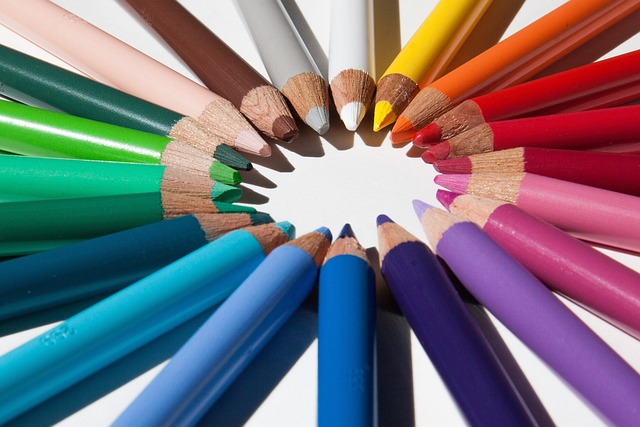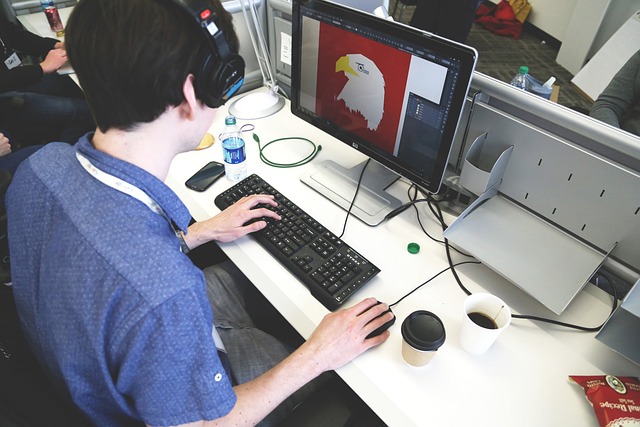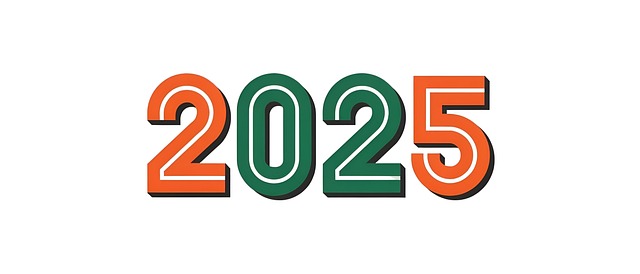Custom Graphic Design is a powerful tool for businesses aiming to stand out in competitive markets. By aligning design with brand values, target audiences, and messaging, designers create visually compelling identities that enhance customer engagement. This process involves collaborative research, mood boards, brainstorming, and iterative refinement based on feedback. Today, graphic design caters to diverse industries, offers personalized solutions, and embraces sustainability along with technological advancements like AR/VR. Success is measured through impact, effectiveness, and key metrics like ROI, ensuring designs drive tangible business results.
Custom graphic design is a powerful tool for businesses seeking to stand out in a crowded market. By crafting unique visual solutions, brands can effectively communicate their identity and engage audiences. This article explores the comprehensive process of custom graphic design, from conceptualization to final delivery, highlighting its benefits across various industries. We’ll guide you through choosing the right designer and unveil emerging trends shaping this dynamic field, offering insights on measuring the impact of graphic design for maximum success.
Understanding Custom Graphic Design: Unlocking Unique Brand Identity

Custom Graphic Design is more than just creating visually appealing images; it’s about crafting a unique brand identity that sets businesses apart in a crowded market. By understanding the core values, target audience, and brand message of a company, graphic designers can translate these elements into captivating visual concepts. This process involves exploring diverse design styles, color palettes, typography, and layout structures to create a cohesive visual language that resonates with customers.
Unlocking this unique brand identity through custom Graphic Design solutions offers significant advantages. It helps businesses communicate their purpose and values more effectively, fostering a deeper connection with their audience. Moreover, it ensures that brands remain consistent across various marketing collateral, from logos and websites to social media graphics and advertising materials, strengthening their market presence and recall value.
The Process: From Concept to Creation

The journey of transforming an idea into a captivating graphic design begins with a deep understanding of the client’s vision and goals. It is a collaborative process where the designer actively listens to and interprets the client’s needs, be it for branding, marketing materials, or web interfaces. This initial phase involves extensive research, mood boards, and brainstorming sessions to establish a unique concept that aligns perfectly with the brand identity.
Once the concept is finalized, the designer brings it to life using specialized software and their creative expertise. This creation process entails meticulous attention to detail, ensuring every element—from color palettes to typography—enhances the overall aesthetic and effectively communicates the intended message. The designer may iterate and refine the design multiple times, seeking feedback and making adjustments until the final product meets the highest standards of quality and exceeds client expectations.
Benefits of Tailored Visual Solutions

In today’s competitive market, standing out is essential for any business. Custom graphic design solutions offer a powerful tool to achieve this. By tailoring visual elements to fit specific brand identities and marketing goals, businesses can create unique and memorable experiences for their customers. This personalized approach enhances brand recognition and engagement, setting companies apart from their competitors.
Tailored graphic design provides an opportunity to convey complex ideas or messages in a visually appealing and concise manner. It allows for the effective communication of brand values and stories, ensuring that the target audience understands and connects with the message. Furthermore, custom designs can adapt to various media formats, from print materials to digital platforms, ensuring consistency across all marketing channels. This versatility enhances the overall impact and reach of a brand’s visual presence.
Targeting Specific Industries and Needs

In the realm of graphic design, catering to specific industries and tailored needs is a game-changer. Custom Graphic Design Solutions excel at understanding unique client requirements, whether it’s creating brand identities for startups or developing intricate marketing collateral for established enterprises. By industry, they navigate diverse landscapes, from fashion and retail to healthcare and finance, offering bespoke designs that resonate with target audiences.
This targeted approach ensures that every project is a perfect fit, enhancing brand visibility and communication. Skilled designers employ relevant aesthetics, symbolism, and messaging to capture the essence of each client’s vision. Such precision not only satisfies immediate needs but also paves the way for long-term partnerships, solidifying the studio’s reputation as an industry expert in Graphic Design solutions.
Choosing the Right Designer for Your Project

When it comes to your graphic design project, selecting the ideal designer is a pivotal step. The right choice can transform your vision into a stunning reality while aligning with your brand identity and objectives. Look for designers who possess not just exceptional creative skills but also a deep understanding of your industry and target audience. A strong portfolio showcasing diverse projects and positive client testimonials are telltale signs of expertise.
Consider their communication style, project management approach, and ability to listen to and interpret your ideas. Effective collaboration relies on clear communication, timely feedback, and adaptability to revisions. Choose a designer who demonstrates flexibility, creativity, and a passion for delivering high-quality work. After all, the ideal partnership is built on trust, mutual respect, and a shared commitment to excellence in graphic design.
Trends Shaping the Future of Custom Graphics

The dynamic world of graphic design is constantly evolving, with emerging trends setting the stage for the future of custom graphics. One notable trend is the increasing demand for sustainable and eco-friendly design solutions. As awareness about environmental issues grows, many businesses and designers are opting for recycled materials, minimalism, and nature-inspired motifs to create visually appealing and responsible designs. This shift not only caters to environmentally conscious consumers but also offers a unique opportunity to stand out in a crowded market by showcasing brand values.
Additionally, technology is playing a pivotal role in shaping the future of graphic design. Advanced digital tools and software enable designers to push creative boundaries, experiment with new techniques, and deliver intricate visual experiences. From augmented reality (AR) and virtual reality (VR) integrations to interactive web graphics, these innovations are transforming how we perceive and engage with visual content. As technology continues to advance, graphic designers will have even more opportunities to create immersive and dynamic custom solutions that capture the essence of their clients’ brands in innovative ways.
Measuring Success: Evaluating the Impact of Graphic Design

Measuring success in graphic design involves evaluating the impact and effectiveness of visual communication. It’s not just about creating visually appealing designs, but ensuring they resonate with the intended audience, align with brand goals, and achieve desired outcomes. By setting clear objectives before starting any project, designers can then assess how well their work meets these benchmarks.
This evaluation process includes tracking key metrics such as increased website traffic, higher conversion rates, improved brand recognition, and positive user engagement. These data points help in understanding the return on investment (ROI) of graphic design solutions, demonstrating their tangible value to businesses and organizations. Effective measurement allows designers to refine their processes, adapt strategies, and continuously deliver impactful visual content that drives results.
